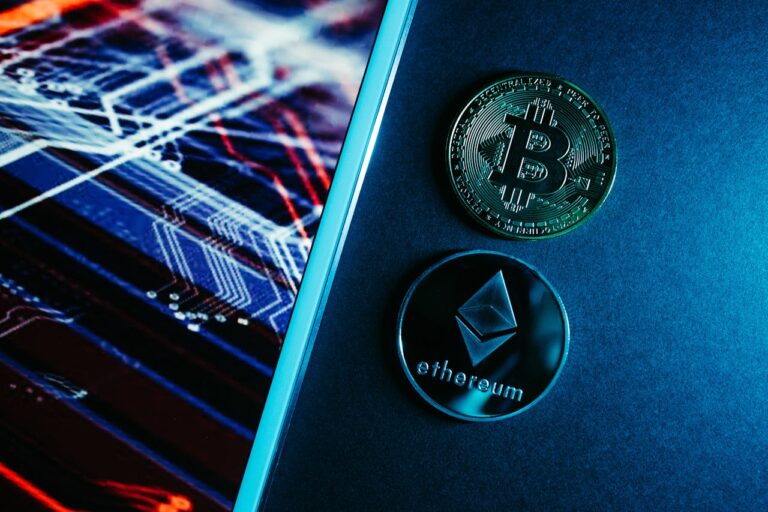Non-fungible tokens (NFTs) have surged in popularity, introducing a unique asset class into the cryptocurrency world. Unlike regular cryptocurrencies, NFTs are digital collectibles that require special care for safe storage and trading. By understanding the best practices for handling NFTs, you can integrate them securely into your Bitcoin wallet.
Choosing an NFT-Compatible Wallet
The first step in safely managing NFTs is selecting a cryptocurrency wallet that supports NFT functionality. Many wallets allow you to store, send, and display NFTs, making it easier to interact with NFT markets. It’s generally better to choose client-side storage over custodial solutions, as this ensures you retain full ownership of your NFTs. Thoroughly research to find the most secure wallet that fits your needs.
Popular wallets have integrated NFT support, providing user-friendly interfaces and robust security features. Make sure the wallet you choose is well-reviewed and widely used within the NFT community to minimize the risk of vulnerabilities and security breaches.
Understanding NFT Transaction Fees
Trading NFTs involves higher network fees, often referred to as “gas,” compared to regular cryptocurrency transactions. This is because NFTs contain metadata files and require interactions with smart contracts, making the process more complex and costly. Gas fees can vary significantly based on network congestion, so it’s important to consider these costs before buying or moving NFTs.
For example, during peak times on the Ethereum network, gas fees can skyrocket, making even simple transactions expensive. To avoid overpaying, monitor gas prices and aim to transact during off-peak hours. Some wallets and tools offer features to help users track and optimize gas fees, ensuring more cost-effective transactions.
Keeping NFTs Separate from Main Holdings
To enhance security, it’s wise to store NFTs in a separate wallet from your main cryptocurrency holdings. This approach helps protect your core assets from potential risks associated with NFT trading. Keep the majority of your funds in cold storage (offline), while using a “hot” wallet (online) for active NFT trading. This separation reduces risk exposure, as cold storage is generally safer from online threats.
When connecting wallets to third-party services or sites, be cautious to avoid granting excessive permissions that could compromise your assets. Regularly review and update your wallet permissions, ensuring you only allow necessary access to trusted platforms.
Protecting Against Phishing Scams
The popularity of NFTs has unfortunately attracted many scams, including phishing links and fake marketplaces. To protect yourself, follow security best practices such as avoiding unknown links or offers, using well-known marketplaces, double-checking URLs and seller identities, and enabling two-factor authentication (2FA).
For instance, always verify the legitimacy of NFT marketplaces by checking for official announcements from trusted sources. Be wary of deals that seem too good to be true, as they might be attempts to steal your information or assets. Educate yourself on common phishing tactics and stay vigilant to avoid becoming a victim of scams.
Researching Floor Values and Listing Prices
Before buying or listing NFTs for sale, research current floor values, which are the lowest prices available for that NFT. Understanding floor values helps you set appropriate bid and asking prices. Since the NFT market is still developing, price discovery can be challenging, so thorough research is essential.
Use trusted platforms to track market trends and analyze historical price data. By staying informed about market conditions, you can make better decisions about when to buy or sell your NFTs, maximizing your potential returns while minimizing risks.
Practicing Good Wallet Hygiene
Regularly monitoring your wallet activity is crucial to ensure that only authorized transactions occur. Set up alerts for any transfers, mints, or sales to get real-time notifications. Protect your seed phrases and wallet passwords carefully, as compromised access can lead to the quick theft of your NFTs.
Enable multi-factor authentication (MFA) and other security measures for additional protection. MFA adds an extra layer of security by requiring multiple forms of verification before granting access to your wallet. This significantly reduces the risk of unauthorized access, even if your password is compromised.
Conclusion
NFTs offer an exciting way to own unique digital assets, but they require enhanced security precautions. By choosing compatible wallets, accounting for higher transaction fees, isolating holdings, honing anti-phishing skills, researching values, and enabling alerts and multi-factor authentication, you can confidently build your NFT portfolio.
With the right strategies, your Bitcoin wallet can securely facilitate your participation in the digital asset revolution. Carefully selecting your Bitcoin wallet and executing transactions securely are key to mastering the world of NFTs. By following these guidelines, you can enjoy the benefits of NFTs while minimizing risks and protecting your investments.

